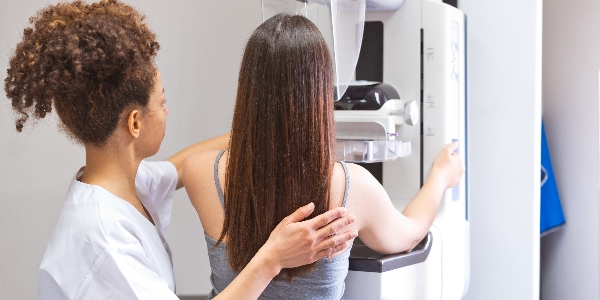
Update and Clarification
On Tuesday 29 April, Motion 64 – Mammography: A Career for Only Women? – was carried at ADC 2025.
Our Annual Delegates’ Conference (ADC) provides members with the unique opportunity to help shape the strategic direction of the Society and the wider profession. Each region and country can propose motions and send a delegation to the conference. Motions can cover any topic, and those chosen by the Delegate Conference Committee are debated and voted on at the conference.
If a motion is carried, it then moves to UK Council, who will review what action, if any, can be taken.
In this case, while the Society can advocate for greater inclusivity in mammography, decisions around who can work in mammography services ultimately sit with the NHS. No changes have been made, and any future developments would require a formal review and detailed discussions with relevant NHS bodies and stakeholders.
Original Article
Published 29/04/2025
Male health workers should be allowed to perform breast screening examinations to help tackle workforce shortages, the Society of Radiographers has said.
Mammography is exclusively carried out by female staff, but the SoR has now called for a change in policy amid "critical" staff shortages among mammographers - radiographers who specialise in breast imaging.
SoR officials also said male health workers could excel in the field but are being denied the chance because of their gender.
Every three years, women aged 50 to 71 are invited for breast screening, also known as a mammogram. These scans look for cancers that are too small to see or feel.
The role of a mammographer
The SoR has now called for a change in policy amid "critical" staff shortages among mammographers - radiographers who specialise in breast imaging.
At the SoR Annual Delegates' Conference, being held in London from Monday 28 April to Wednesday 30 April, a motion will be presented that states: "The role of a mammographer is to have technical expertise operating imaging equipment, proficiency in understanding anatomy, while maintaining patient comfort and analysing the images produced - skills learnt through education and experience.
"These are not inherently gendered attributes, specific or biased to one gender."
The motion adds that men "might excel in this" and "offer a different perspective or approach to patient care".
The SoR said the vacancy rate among screening mammographers is 17.5 per cent.
Reducing shortages, reducing waiting lists
Vacancy rates among symptomatic mammographers - who assess women who have found a lump in their breast or have a family history of breast cancer - is almost 20 per cent.
"Allowing men to work in mammography would help to reduce shortages - and therefore to reduce waiting lists," said Charlotte Beardmore, executive director of professional policy at the SoR.
"That, in turn, would ensure that every patient is given the treatment they need, when they need it."
